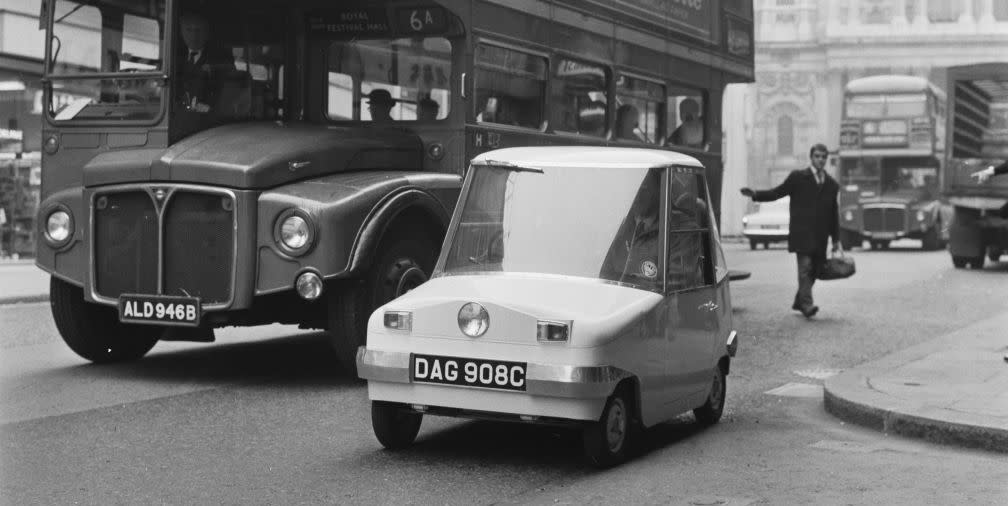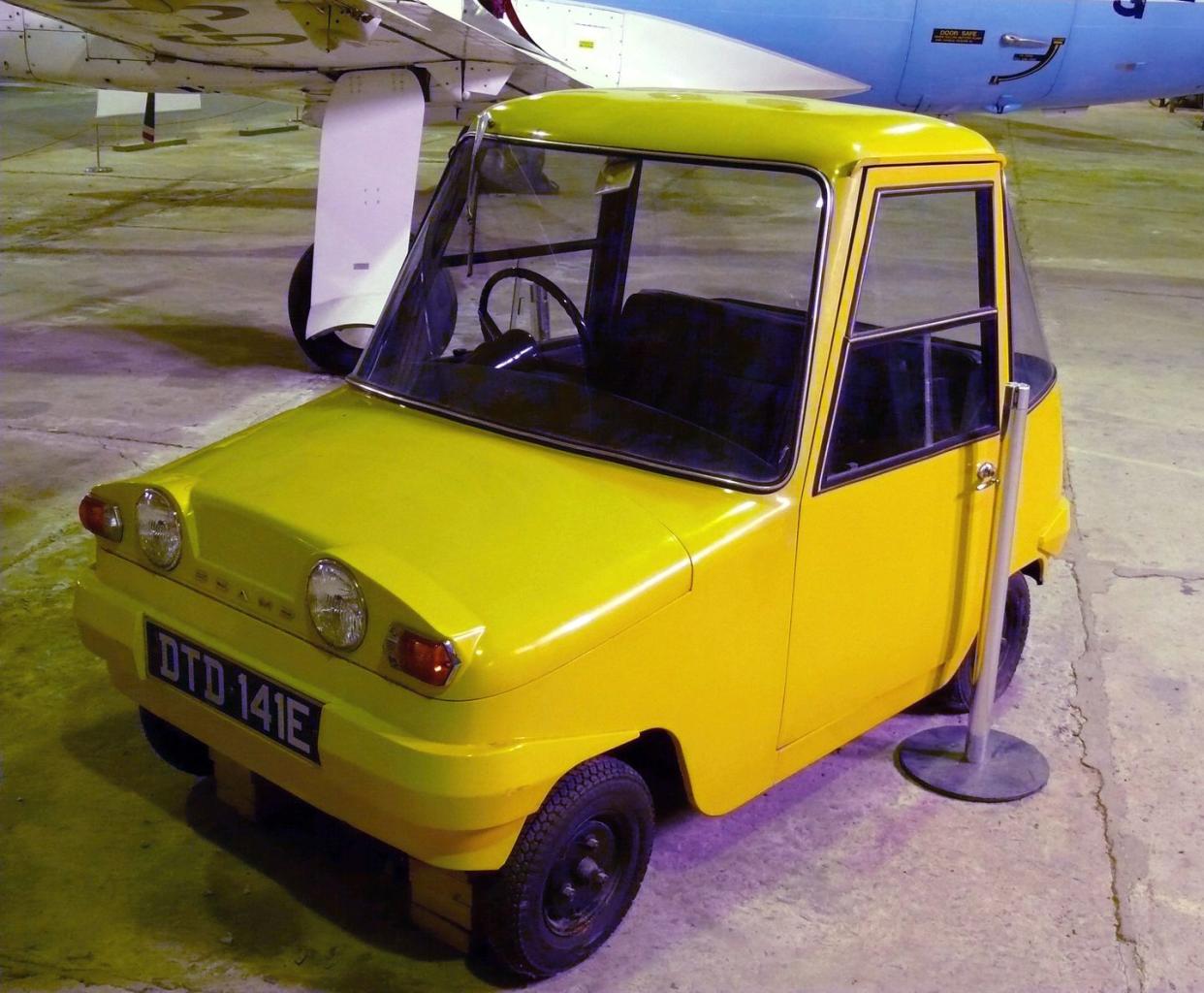Scotland’s EV You’ve Never Heard About: The Scamp

In the previous week’s newsletter, you may have read that 38 percent of automobiles in the early 20th century were powered by electricity, with steam-powered cars occupying 40 percent of the market share and gasoline-powered vehicles bringing up the numbers at just 22 percent. Sure, the pedantic among the automotive community will argue and bicker about which vehicle was actually the first to come to market, but I thought it would be much more interesting to talk about electric vehicles that you’ve most likely never heard of. I’m looking at Scottish Aviation’s (yes, Aviation) equally adorable and problematic EV concept called the Scamp.
Mentioning Scotland and automobiles in the same breath often furrows more than a few brows. And that’s for good reason. The nation is best known for its lochs, bagpipes, music culture, and distilleries—among other things. Cars? Not so much. While the automotive back catalog from other countries (e.g. Germany, America, Italy, and even France) reveals a smorgasbord of excellence, Scotland’s list of “greats” isn’t really in the same ballpark. It’s surprising as they’ve contributed so many great inventions like the television, the telephone, the MRI scanner, disposable contacts, and even the toilet—amongst many others. So why did almost none of their automobiles catch on?

So the Scottish automotive industry isn’t picture-perfect, but they did give us the Scamp, one of the most hilarious microcar EV concepts you’ve likely never heard of. Surprisingly the name Scamp wasn’t a reference to its ability to scamper away from intersections—though one journalist did commend its peppy acceleration. The callsign was merely just a fusion way of the words Scottish (from Scottish Aviation) and AMP for electricity.
Its microscopic wheels, 38-mph top speed, and 14-mile range were potent enough to have other microcars, like the BMW Isetta, Peel P50, and even the mighty Fuldamobile trembling in their boots. Well… not really. In fact, the Scamp’s real Achilles heel was its anemic top speed. But it was one of the first all-electric microcar concepts that the world had ever seen.
By some miracle, public interest remained high after they had received word of what the Scamp was capable of. Motoring journalists that drove the 12 production models noted impressive maneuverability alongside claims of its brisk acceleration. At one point the company even received backing from Scotland’s Central Electricity Board, which offered to sell the plucky little microcar in its showrooms. While the small but mighty Scamp was looking unstoppable, the only thing standing in its way to hitting the open road was a mandatory roadworthiness test conducted by the Motor Industry Research Association (MIRA).
To say it was a complete disaster is well… putting it nicely. The road test reported quite a few alarming defects so I’ve compiled a list of the highlights below.
Off-camber corners revealed the Scamp’s tendency to run itself off the road.
The contact-plates for the front bump stops bent leading to the front tires making contact with the wheel arches.
The front showed extremely high wear after just 32 miles.
Both front wheels showed signs of bending and buckling.
When running in wet conditions, the driver's floor became flooded.
The driver’s knee was bruised by the door handle and the safety harness persistently slipped off his shoulder.
Both front wheels buckled, allowing the tire to deflate.
After 330 miles the body had settled half an inch along with the front springs taking up reverse camber and the rear springs considerably weakening.
This is just a small taste of the much longer list of comments from MIRA’s 1,000-mile roadworthiness test. The rough verdict proved enough for the local Electricity Board to pull the plug on the tainted project before it ever had the chance to get off the ground.
Despite the damning news, Scottish Aviation kept calm and carried on, bringing on racing legend Stirling Moss to promote its project. Despite his reputation as one of the best Formula 1 drivers to never win a world championship, Moss’s presence wasn’t enough to drum up newfound interest. Only four of the thirteen original Scamps remain today—three of them belonging to museums while the fourth is privately owned.
After the Scamp’s inevitable demise, Scottish Aviation went back to doing, well, aviation—keeping the company alive until it was absorbed by British Aerospace in 1977. It’s a sad story really because if the Scamp project had panned out, it could’ve put Scotland’s Automotive Industry on the map. However, instead of bringing the noise to electric avenue, the silent-but-deadly microcar became the rear end of any joke regarding the Scottish automotive scene—I’ll let you be the judge of whether it's unfounded or not.
You Might Also Like
